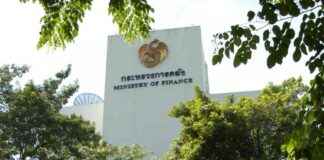SCB EIC, the research center of Siam Commercial Bank (SCB), has forecasted limited loan growth in 2025, marking the highest level of tightening in a decade within the banking sector. This prediction comes amidst escalating credit risk and a downturn in economic growth, setting the stage for challenging times ahead for borrowers and financial institutions alike.
Economic Outlook and Loan Growth Restrictions
According to Somprawin Manprasert, the chief economist at EIC, total loan growth in the banking industry is anticipated to remain stagnant or experience only minimal expansion of approximately 1% in the upcoming year. This conservative estimate stems from heightened credit risk among clients, especially individual borrowers, coupled with the prevailing weaker economic climate. Manprasert emphasized that the banking sector has already initiated a tightening of loan growth this year, with expectations for this trend to escalate in 2025 due to cautious asset quality management practices. As a result, the sector is poised to enforce the most rigorous loan growth restrictions witnessed in the past decade.
Rising Non-Performing Loans (NPLs)
Furthermore, projections indicate a continued rise in non-performing loans (NPLs) within the banking industry in the coming year. Existing special mention (SM) loans, categorized as debt defaults lasting between 60 and 90 days, are likely to transition into NPLs within the next five to six months. However, the management of NPLs will vary based on each bank’s individual strategy, offering a glimpse into the diverse approaches adopted by financial institutions to navigate this challenging landscape.
Impact on Retail Loans and Economic Stimulus
Thitima Chucherd, the head of economic and financial market research at EIC, highlighted the deteriorating quality of retail loans as a consequence of stringent lending standards imposed by financial entities. Data from the National Credit Bureau (NCB) underscores a sustained decline in retail loan quality, underscoring the prolonged nature of household debt issues and the resultant strain on consumption patterns in the short term. Notably, between 2019 and the fourth quarter of 2023, a significant portion of individual borrowers struggled to service their debts, underscoring the pervasive nature of financial challenges faced by many.
As Thailand braces for a GDP growth rate of 2.4% in 2025, down from the previous year’s projection of 2.7%, calls for economic stimulus measures have grown louder. EIC advocates for policy rate cuts by the Bank of Thailand to bolster economic growth, citing the absence of inflationary pressures as a conducive environment for such interventions. While challenges lie ahead, the resilience and adaptability of both borrowers and financial institutions will be pivotal in navigating the uncertainties of the financial landscape in the year to come.
In times of economic uncertainty, it is crucial for individuals to reassess their financial health and explore proactive measures to safeguard their economic well-being. Whether it involves seeking financial advice, consolidating debts, or exploring alternative income streams, taking proactive steps can provide a sense of financial security and stability in uncertain times. By staying informed and proactive, individuals can weather the storm and emerge stronger on the other side, equipped with the resilience to navigate future financial challenges with confidence.




















